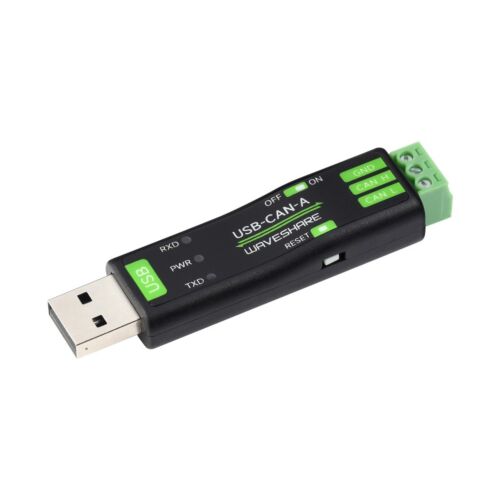This is a placeholder topic for “USB to CAN Adapter Model A, STM32 Chip Solution, Multiple Working modes, Multi-system Compatible” comments.

USB to CAN Adapter Model A, STM32 Chip Solution, Multiple Working modes, Multi-system Compatible…
Read moreThis is a placeholder topic for “USB to CAN Adapter Model A, STM32 Chip Solution, Multiple Working modes, Multi-system Compatible” comments.

USB to CAN Adapter Model A, STM32 Chip Solution, Multiple Working modes, Multi-system Compatible…
Read moreI am interested in your USB-CAN adapter. Due to availability and cost I would like to use this as an alternative to the Ewert CANdapter (CANdapter | Orion Li-Ion Battery Management System) to program an Orion BMS. Both devices say that they appear as virtual com ports on the PC but I’m not sure if the PC side protocol would match. Cheers.
For things like baud rate and stop bits, the protocol is easily configured on the PC end.
Device configuration commands are likely to be different - you would need to consult the manual for both devices. But once you have the device configured and accessible, the BMS diagnostic and management software will simply communicate through the serial port, and unless there is something very special in your BMS management software, one serial port will look very much like any other serial port. So the compatibility question probably comes down to how you are issuing the bus configuration commands to establish the communication between the adapter and the CAN bus. If they are hard-wired in the BMS software that will create a problem if the two devices differ. If they are issued from a configuration file or entered manually then implementing the changes (if any) would be straightforward. If the software assumes that the device is already configured and ready to communicate, then you can use the USB_CAN configuration tool to do it once, save it to device memory, and it will automatically configure at each startup.
I can’t see the link on the Core page, but it is here:
USB-CAN-A - Waveshare Wiki
Awesome - thanks for the detail information. I think it is worth trying so I will get one of your USB-CAN adapters. Will be a useful tool to have in the toolbox in any case ![]()
Cheers
Duncan
Hi Duncan,
Welcome to the forums! I’m glad to see that Jeff has got you sorted here, feel free to add another comment if you have anymore questions.
You are quite right in that this can be a useful bit of kit to have in the toolbox.
If you run into any issues with using it programming your Orion BMS or other projects you have going, or just want to share your good work, make sure to go ahead and make a topic about it so we can give you a hand if you need it ![]()
Good luck and happy programming!
Sophia
Hi @Duncan261781 , Did you get it to work ?
No but I didn’t pursue it much as I got my hands on the official “candapter”. I plan to have another go soon.
Hi Paul,
Welcome to the Forums! If you are chasing this down because you have a similar project with this adapter feel free to post the details here and we will give you a hand however we can.
Sam
Hello, can I use this device to program Orion Jr.2 BMS?
As CANBus is a widely used protocol it is likely that the CANBus interface provided by the manufacturer of your BMS is compatible with the adapter. However it is not usual for BMS systems to be controlled using CANBus. The bus is usually used to inform other devices (eg, the motor) of the state of the batteries and the BMS system, so that intelligent controllers in those devices can adjust their behaviour. For instance, it is used in materials handling equipment to enable the motor controller to prevent the motor running while the batteries are charging. So while it will likely be possible to connect the adapter to the BMS bus and read the information, it is unlikely that you would be able to control the BMS. That is usually done either through an interface such as USB or a proprietary interface to a proprietary controller. If the manufacturer provides details of the PIDS used with the CANBus interface you can look it up to see whether it includes any control PIDs, or only information PIDs.